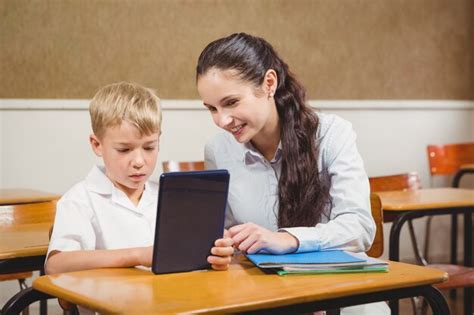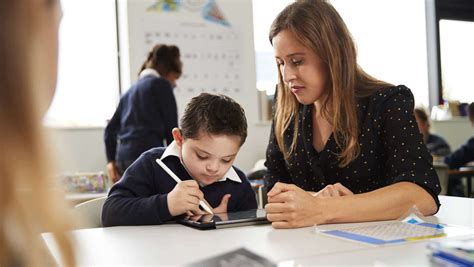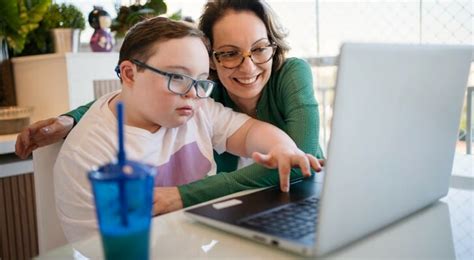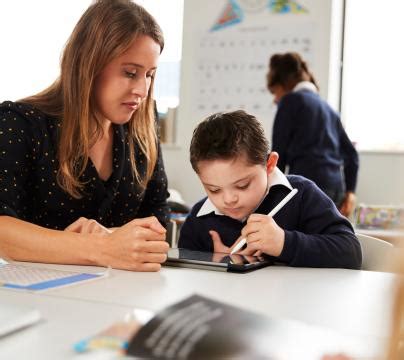Creating inclusive and accessible learning environments is essential for the success of all students, especially those in special education classrooms. These environments ensure that every student, regardless of their background or abilities, can access and benefit from educational opportunities. This article explores the importance of inclusive and accessible learning environments, outlines how to identify the unique needs of students in special ed classrooms, and highlights best practices for enhancing inclusivity and accessibility. Additionally, it discusses strategies for fostering a supportive classroom atmosphere, addresses potential challenges, and provides valuable resources and tools for educators and parents committed to implementing effective and inclusive educational practices.
Embark on a detailed exploration of this topic with gameshoek.com
1. Why Inclusive and Accessible Learning Environments Matter
Inclusive and accessible learning environments are vital for ensuring that all students, including those with special needs, have the opportunity to succeed academically and socially. These environments break down barriers that traditionally hinder students with disabilities, promoting equality and respect within the classroom. When students feel included and supported, they are more likely to engage in learning, participate actively, and develop confidence in their abilities.
Creating such environments also benefits all students by fostering a culture of empathy, collaboration, and understanding. Exposure to diverse perspectives and experiences enriches the educational experience, preparing students for a world that values diversity and inclusion. Additionally, inclusive classrooms encourage the development of critical social skills and emotional intelligence, which are essential for personal and professional growth.
Educators play a crucial role in building inclusive and accessible learning environments by implementing strategies that address the varied needs of their students. By doing so, they not only support the academic achievements of students with special needs but also contribute to a more equitable and just educational system for everyone.

2. How to Identify the Needs of Students in Special Ed Classrooms
Identifying the needs of students in special education classrooms is crucial for creating effective and inclusive learning environments. The process begins with comprehensive assessments that evaluate each student’s strengths, challenges, and unique learning requirements. These assessments often involve input from various sources, including teachers, parents, specialists, and the students themselves.
Individualized Education Programs (IEPs) play a central role in this process, outlining tailored goals, accommodations, and instructional strategies for each student. Regularly reviewing and updating IEPs ensures that they remain relevant and effective as students progress.
Observations and ongoing communication between educators and parents are essential for understanding students’ evolving needs. Teachers should also foster an open and supportive classroom atmosphere where students feel comfortable expressing their needs and preferences.
By utilizing a combination of assessments, IEPs, and continuous dialogue, educators can accurately identify and address the diverse needs of their students, promoting a more inclusive and supportive educational experience for everyone involved.

3. What Best Practices Enhance Inclusivity and Accessibility
Enhancing inclusivity and accessibility in special education classrooms requires the implementation of best practices that cater to the diverse needs of all students. One fundamental approach is differentiating instruction, which involves tailoring teaching methods and materials to accommodate various learning styles and abilities. This can include using visual aids, hands-on activities, and technology to support different ways of learning.
Universal Design for Learning (UDL) is another essential strategy. UDL principles guide educators in creating flexible learning environments that can be adjusted to meet the needs of all students. This includes providing multiple means of representation, engagement, and expression, ensuring that all students have equal opportunities to access and participate in learning activities.
Collaborative teaching models, such as co-teaching, can also enhance inclusivity. By having general and special education teachers work together, students benefit from a wider range of expertise and instructional strategies. This collaborative approach supports the integration of students with special needs into mainstream classrooms, promoting social interaction and reducing stigma.
Additionally, fostering a positive classroom culture that emphasizes empathy, respect, and cooperation is vital. Educators should set clear expectations for behavior, celebrate diversity, and encourage peer support. Creating an environment where every student feels valued and understood helps to build a sense of community and belonging.
By incorporating these best practices, educators can significantly improve the inclusivity and accessibility of special education classrooms, ultimately supporting the success and well-being of all students.

4. How to Foster a Supportive Classroom Environment
Fostering a supportive classroom environment is key to ensuring that all students, especially those in special education, feel valued and encouraged. Building a positive classroom culture begins with establishing clear, consistent expectations for behavior and interactions. This helps create a safe and predictable environment where students know what is expected of them.
Encouraging open communication is also crucial. Teachers should actively listen to their students, show empathy, and respond to their needs and concerns. Implementing regular check-ins and creating opportunities for students to express their feelings can help in addressing any issues promptly.
Promoting peer support and collaboration enhances the sense of community within the classroom. Group activities and projects that require teamwork can help students build relationships and learn from one another. Celebrating individual and group achievements fosters a sense of pride and belonging.
Providing positive reinforcement and recognizing effort and improvement, rather than just outcomes, encourages a growth mindset. This approach helps students develop resilience and a love for learning, creating a truly supportive classroom environment.

5. What Challenges May Arise and How to Address Them
Challenges in special education classrooms can be diverse and complex, but addressing them effectively is crucial for fostering an inclusive and supportive environment. One common challenge is managing a wide range of abilities and needs within a single classroom. This can be addressed by using differentiated instruction and flexible grouping strategies to ensure that all students receive appropriate support and enrichment.
Behavioral issues may also arise, particularly when students feel frustrated or overwhelmed. Implementing positive behavior interventions and supports (PBIS) can help in managing and reducing disruptive behaviors. Developing individualized behavior plans and using techniques like social stories or visual schedules can also be beneficial.
Another challenge is ensuring adequate resources and support for both students and teachers. Access to specialized training, professional development, and collaboration with special education professionals can empower teachers to better meet their students’ needs. Additionally, advocating for sufficient funding and resources is essential for providing necessary tools and materials.
Communication barriers between educators, parents, and students can impede progress. Establishing clear, consistent channels of communication and involving parents in the educational process can help bridge these gaps. Regular meetings, progress reports, and collaborative goal-setting can ensure that everyone is aligned and working together to support the student’s success.
By proactively addressing these challenges, educators can create a more effective and inclusive learning environment.

6. What Resources and Tools Are Available for Educators and Parents
A variety of resources and tools are available to support educators and parents in creating inclusive and accessible special education classrooms. Professional development opportunities, such as workshops, webinars, and conferences, provide valuable knowledge and skills. Organizations like the Council for Exceptional Children (CEC) offer resources, training, and networking opportunities for educators dedicated to special education.
Technology plays a significant role in enhancing accessibility. Assistive technologies, such as speech-to-text software, audiobooks, and communication devices, help students with disabilities participate more fully in classroom activities. Learning management systems (LMS) and educational apps can also offer personalized learning experiences tailored to individual needs.
Parents can access support through local and national advocacy groups, which provide information, resources, and community connections. Websites like Understood.org and the National Center for Learning Disabilities offer a wealth of information on various disabilities, strategies for support, and legal rights.
Collaborative tools, such as shared digital calendars and communication apps, facilitate ongoing dialogue between educators and parents. This collaboration ensures that both parties are aligned in their efforts to support the student’s learning journey, creating a cohesive and effective educational experience.

Creating inclusive and accessible learning environments in special education classrooms is essential for supporting every student’s success. By understanding students’ needs, implementing best practices, fostering a supportive atmosphere, and addressing challenges with effective resources and tools, educators and parents can build classrooms where all students thrive. Commitment to these principles ensures a more equitable and enriching educational experience for everyone involved.
gameshoek.com
